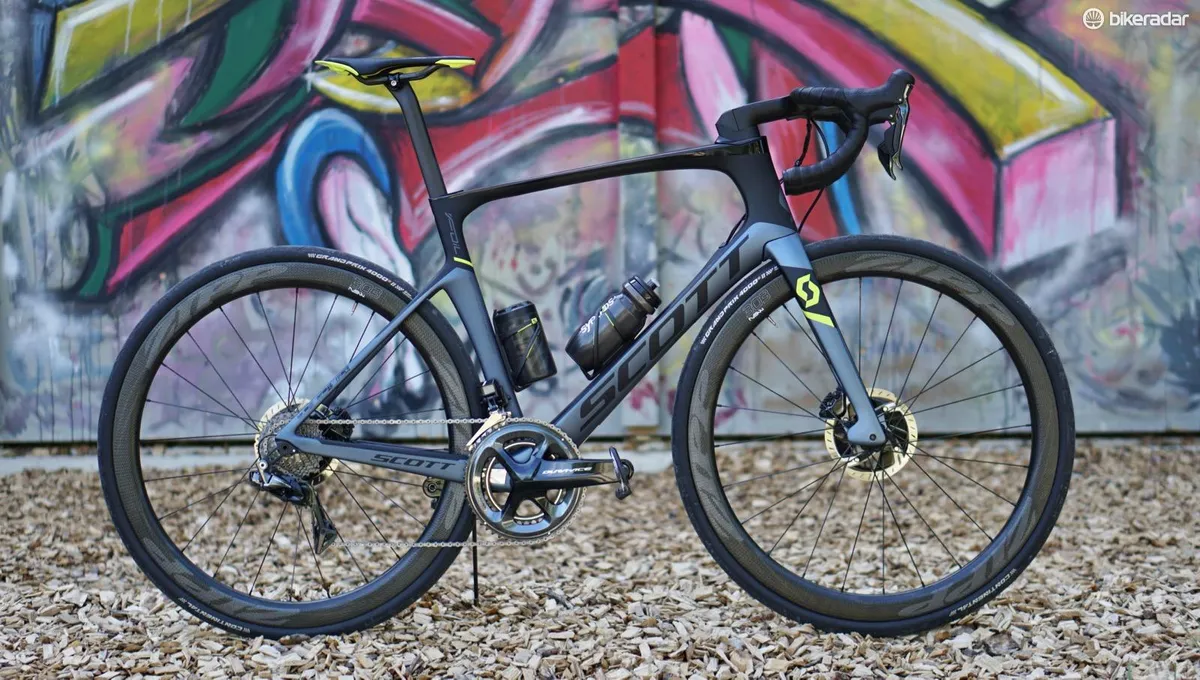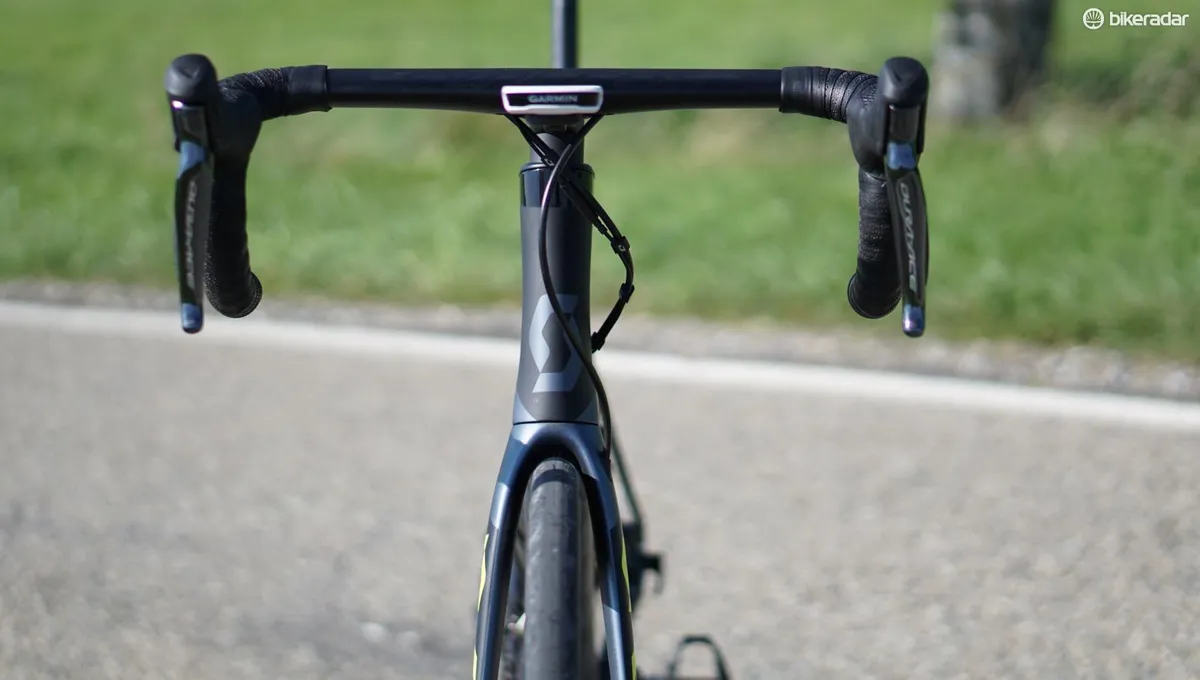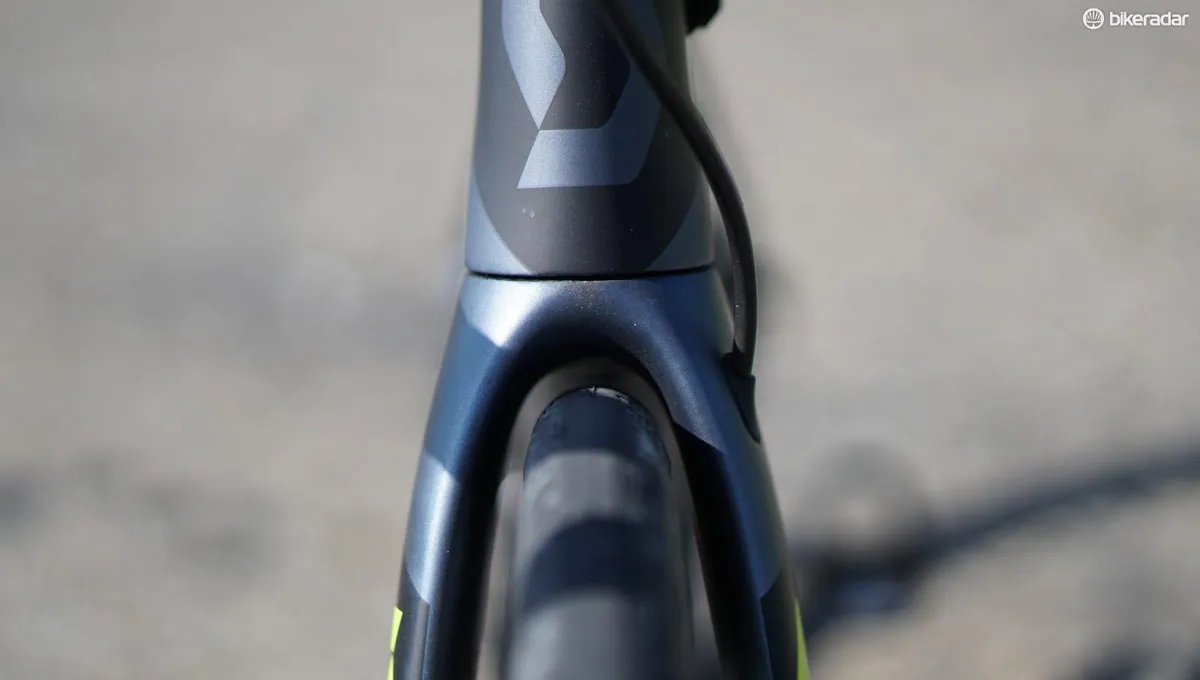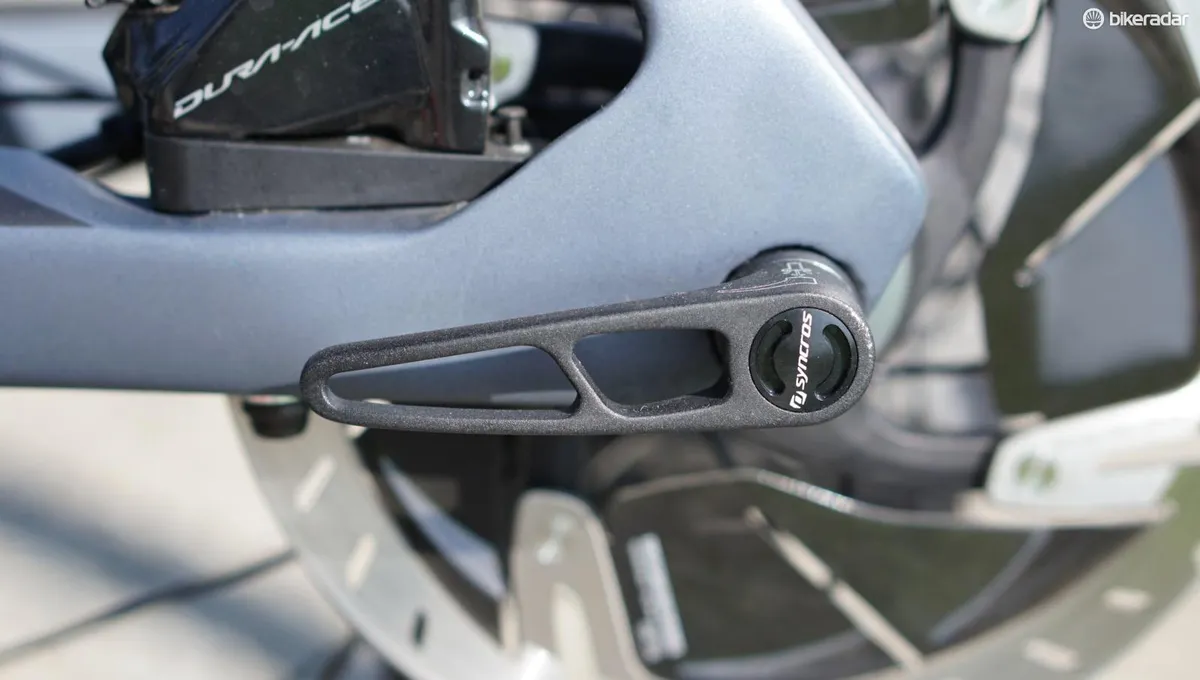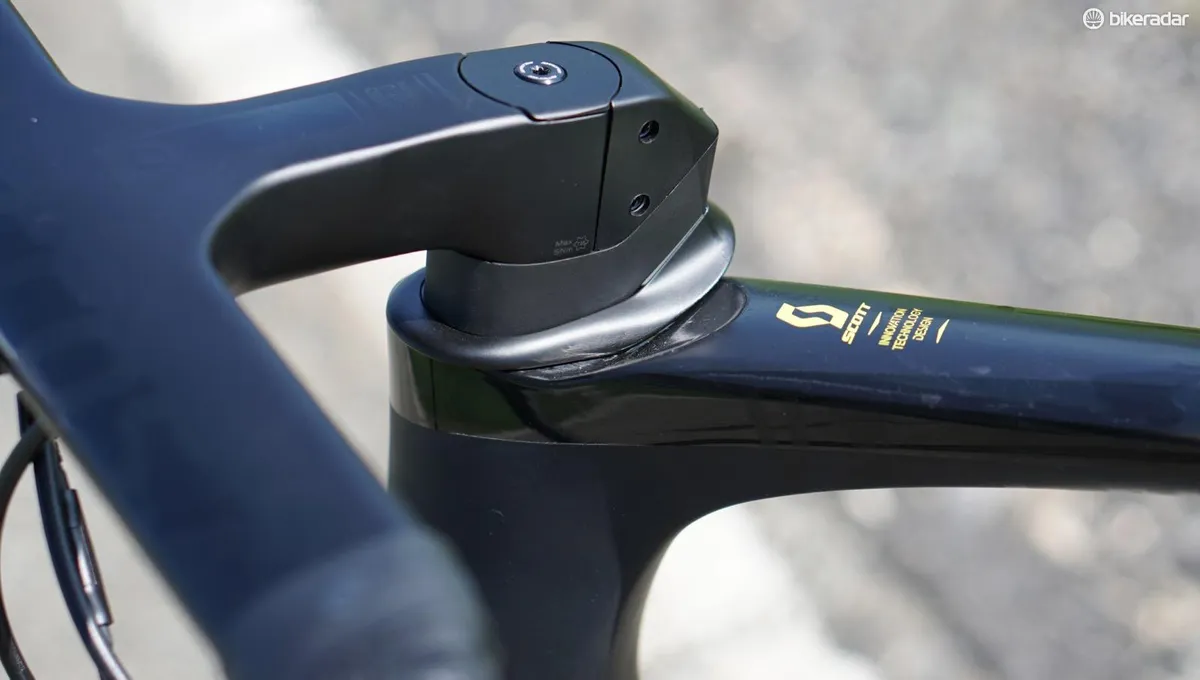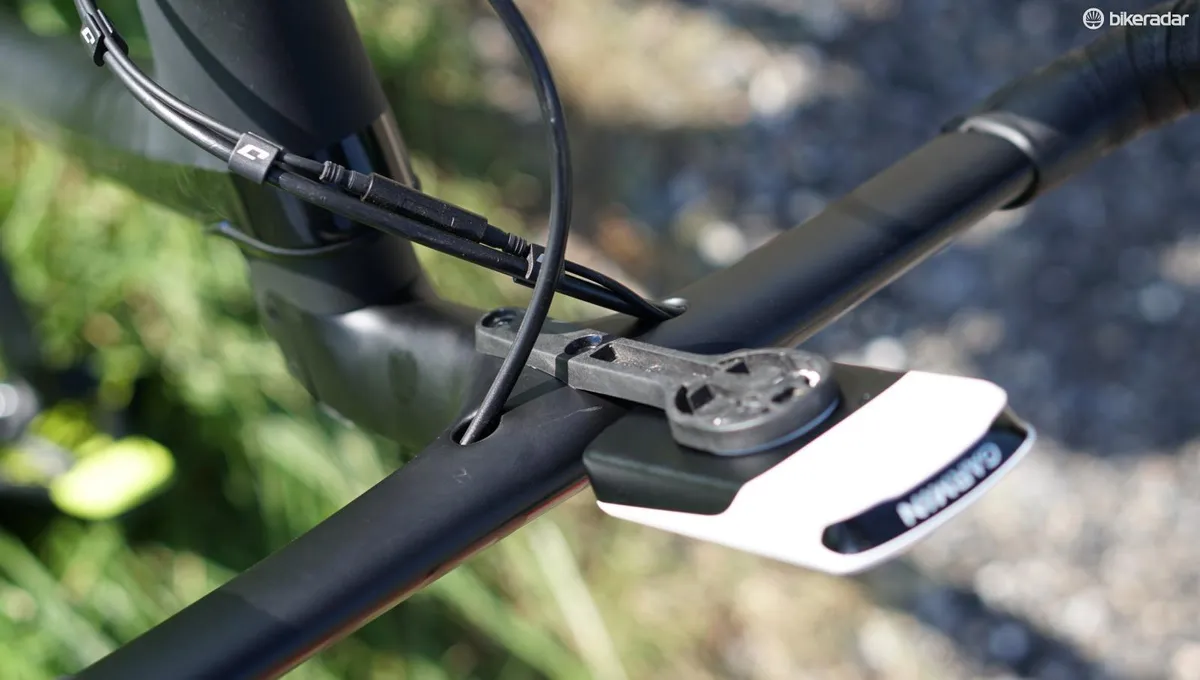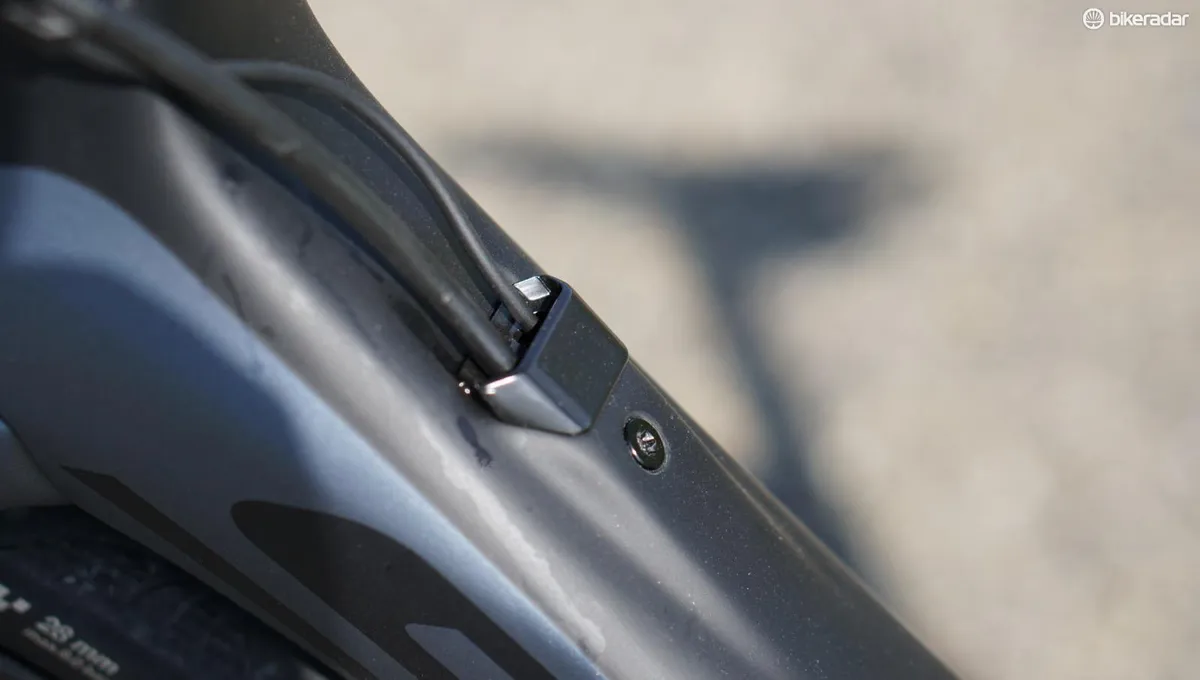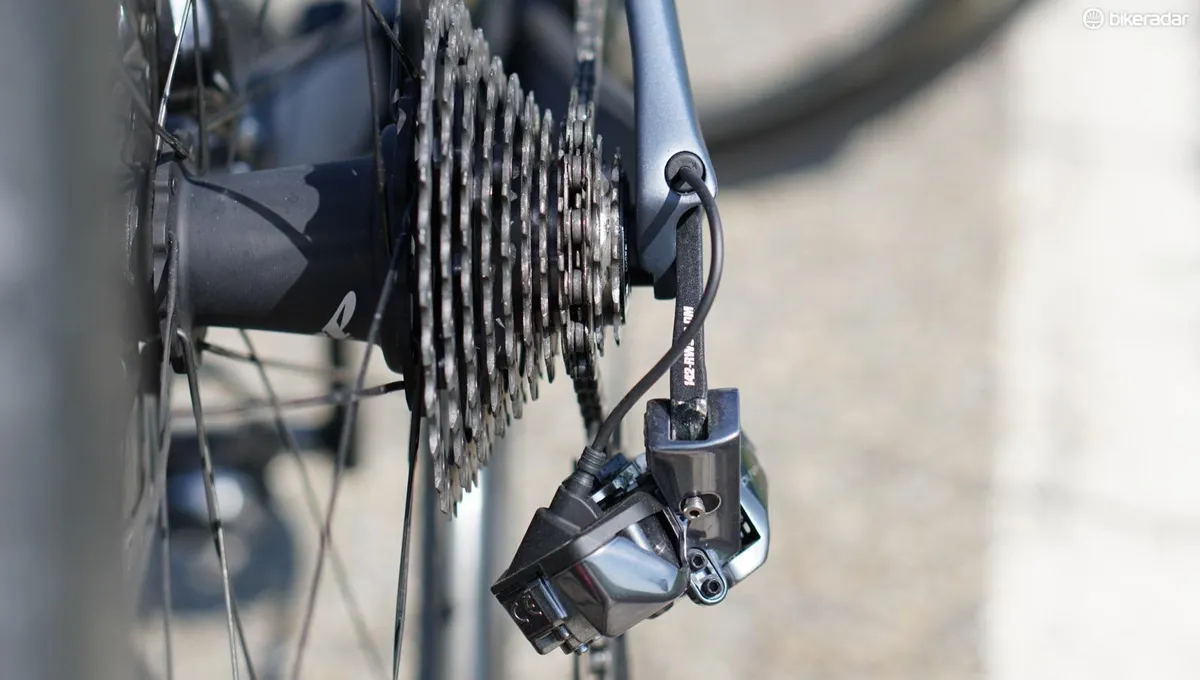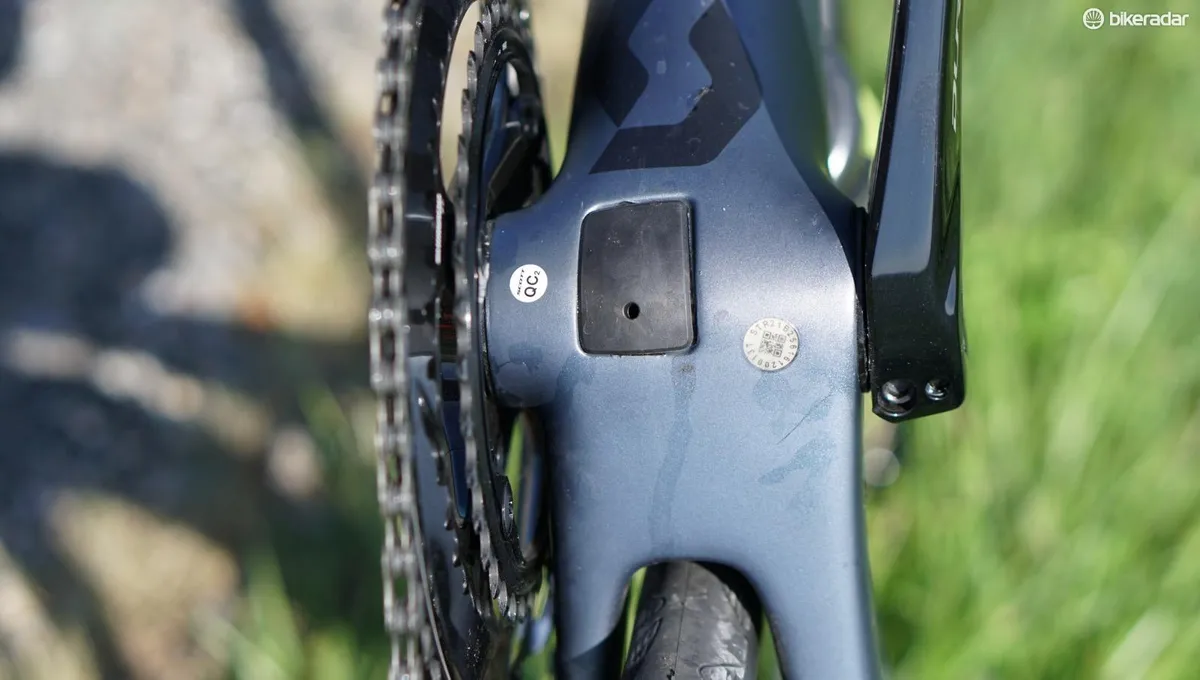On a quick two-hour ride aboard the Scott Foil Premium Disc, I found many things to love and really only one thing to complain about.
Pedaling and steering stiffness are excellent, Shimano's new hydraulic/electric Dura-Ace group is close to flawless, and Zipp's new 303 NSW Disc hoops roll on ultra-plush 28mm Continental Grand Prix 4000 SII clinchers. Scott even specs the bike with sprinter shifters, which I love.
My only gripe? The Syncros Carbon Combo integrated/bar stem has what is basically a right-angle bend along the edge where your palms rest when riding on the tops.
Put some discs — and a shroud — on that

Aero disc bikes are trending.
Specialized added discs to its Venge ViAS early on, and Canyon has an Aeroad Disc. Days ago, Giant launched the Propel Disc aero road bike — completely walking away from aero road bikes with rim brakes.
But while no one argues that hydraulic discs offer superior braking to rim brakes — especially certain integrated aero rim brakes on wet carbon wheels — the idea that adding metal rotors and hydraulic calipers to an aero road bike would make it faster has been a harder sell.
On this point, I found Scott head engineer Benoit Grelier to be refreshingly frank.
“We should not lie; disc brakes are not aerodynamic,” Grelier said. “On average we found you will gain three watts (of drag) going from rim to disc.”
Scott wanted the disc version of the Foil to have the same aero cost as the rim bike, so Grelier’s team set about CFD and wind tunnel work.
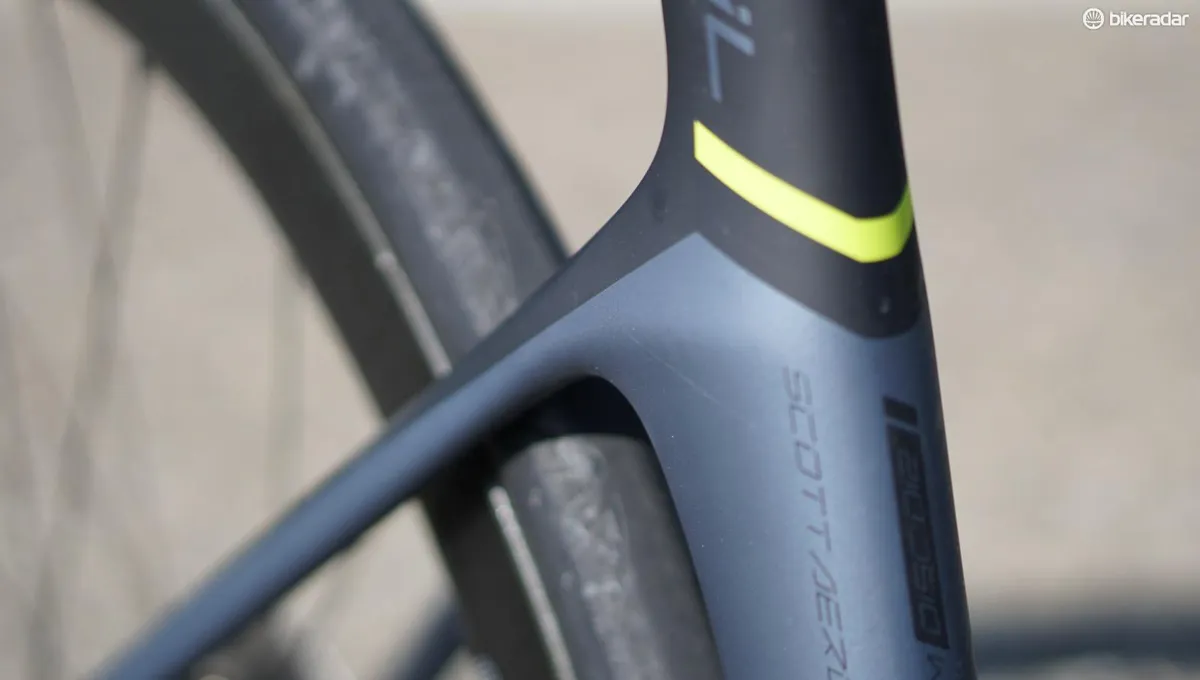
They constructed a little shroud to shield the fork-mounted caliper and extended a little fairing on the opposite side of the fork for a claimed watt’s saving. Another watt was found with a removable thru-axle lever. And the absence of a rim caliper on the cleaned up fork crown saved the final third watt.
I asked how the Foil Disc compared in their wind-tunnel testing to other aero disc bikes; Scott engineers said they did not test other brand’s comparable machines.
On the road — sharp, smooth and fast
I tested the top-end Foil Disc at an event with several other journalists and Scott employees. As is often the case at launches, we rode a loop as a group. There was some easy two-by-two riding with the occasional inexplicable lurching stops, then some faster sections linking tight turns. And, because we are all (mostly aging) boys, we attacked each other up and over hills.
The bike responded to each of these scenarios as you would want it to: quickly, quietly and efficiently.
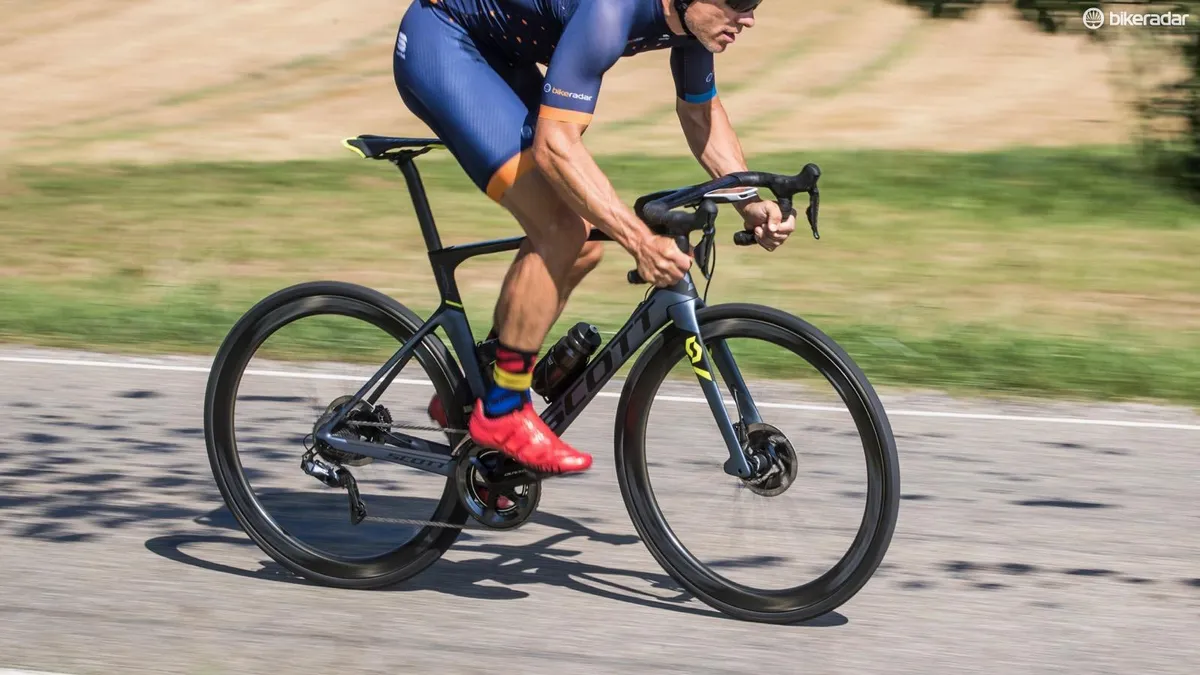
Lateral stiffness at the bottom bracket, head tube and fork are high. When you pull, stomp or just lean the bike with your hips, it responds immediately.
As with the rim-brake Foil, the geometry is all race: low and steep.
But the combination of a completely overworked layup from the original, vertically stiff Foil (which I still regularly race) and the super-plump 28mm Conti Grand Prixs makes for a magic carpet ride in terms of smoothness.
After the group ride, I grabbed my camera and headed back out to take photos. I started out down a narrow paved lane and soon found myself wandering on dirt and gravel trails. I regularly ride the old Foil on dirt roads at home in Colorado on 25mm tires, but the new Foil with 28s (which I suspect measure more like 30 or 31mm on the Zipp 303 NSW rims) is another beast entirely.
Fast and comfortably and capable? Yes, please.

Integrated aero bar — where the wind tunnel meets the road
Integrated bar/stems are also trending on aero bikes, and for a simple reason: less drag on the leading edge of the bike makes for some quick gains.
The trouble is, committing to a fixed bar/stem design compromises fit options. The bar shape may well be ideal for some riders, but if the angles or shape are not, you’re a little stuck.

As with the rim-brake Foil, I found the shape and angles of the hoods and drops to be fine. A quick adjustment of the shift-lever angle and riding on the hoods or in the drops felt like home.
But the top section is shaped with the same truncated airfoil that the frame uses. This may feel smooth for the wind, but it doesn’t feel smooth in my hands. Other riders may feel differently, of course.
Riding on smooth pavement it isn’t much of an issue, but riding over jarring surfaces — like the Belgian and Paris-Roubaix cobbles my colleagues and I rode it on this spring — and the bar shape just isn’t practical.
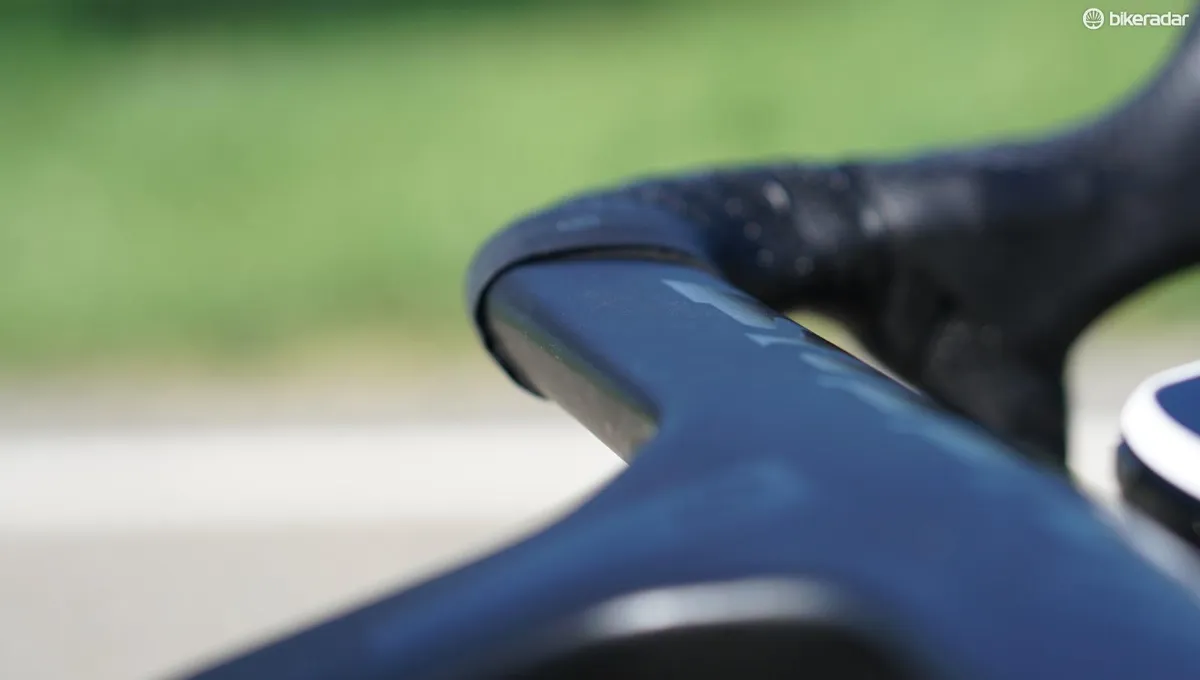
As a result, I found myself riding with my hands spaced more widely than I normally would when riding on the tops.
Bottom line: I would happily pay the 0.2-watt, or whatever, penalty there is for having a slightly rounded rear section to the aero bar. Let’s be honest here, the vast majority of us — including this gray-haired guy — just aren’t going that fast that often.
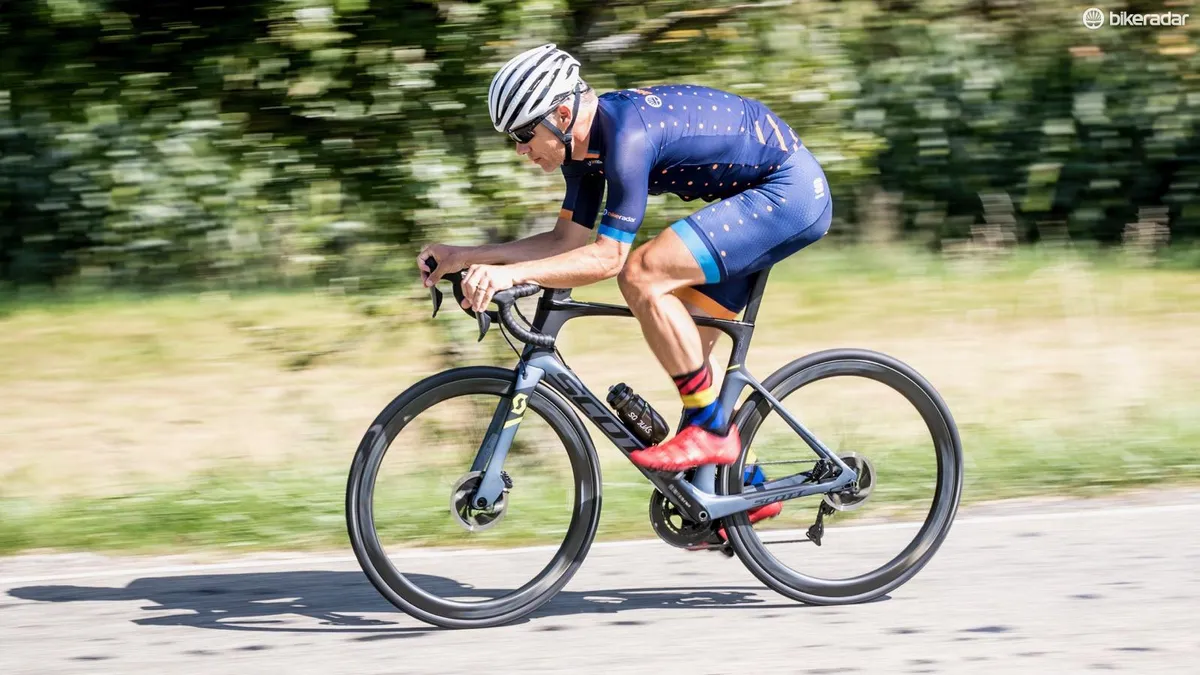
Are disc bikes faster?
Scott engineers believe that in a few years, all the company’s road bikes will be disc.
For the Foil Disc launch, Scott invited retired Formula 1 racer Tom Kristensen to talk about his experiences with strong, consistent braking.
“Braking is where you make lap times in a race car,” Kristensen said. “When you have to slow down from 300kph in 100m, it is very important to have confidence. Confidence means performance.”
Scott believes a similar performance gain can be achieved on bikes, with predictable hydraulics.
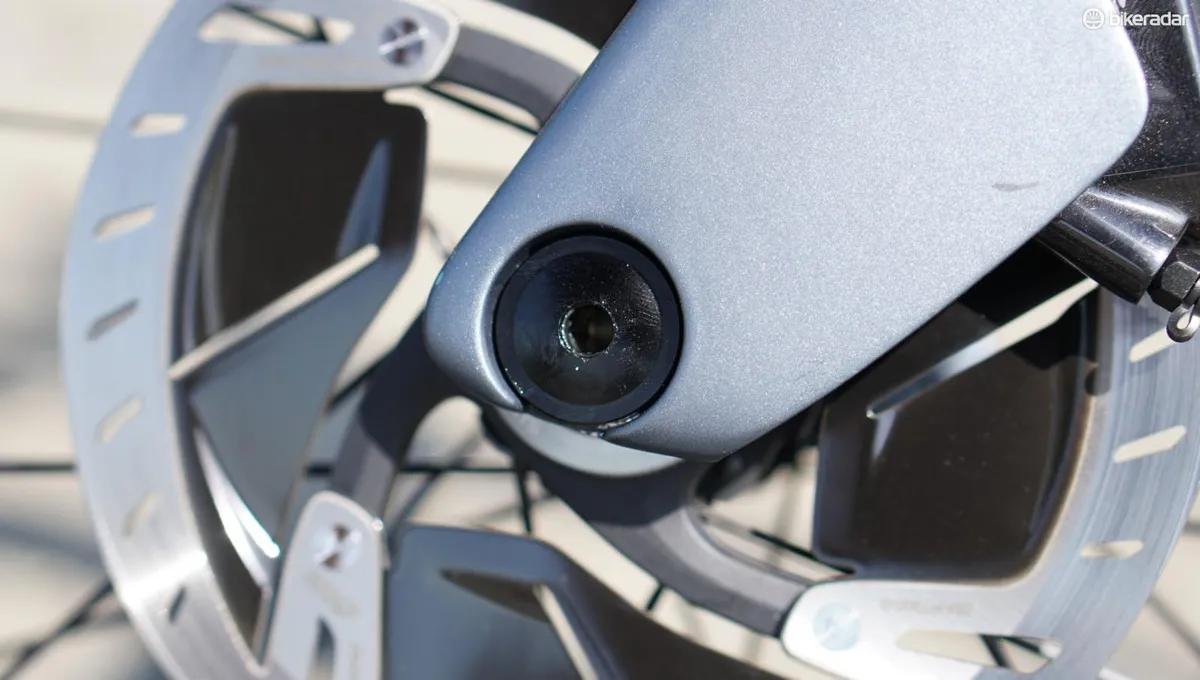
From my perspective, amateurs who race or just want to go fast have excellent options with rim-brake and disc-brake bikes. If you already have an aero rim bike and you ride in flat areas in dry conditions, you’re not missing out on any free speed.
But if you live or ride in the mountains or in the rain, disc brakes are laughably superior to rim brakes on carbon wheels.
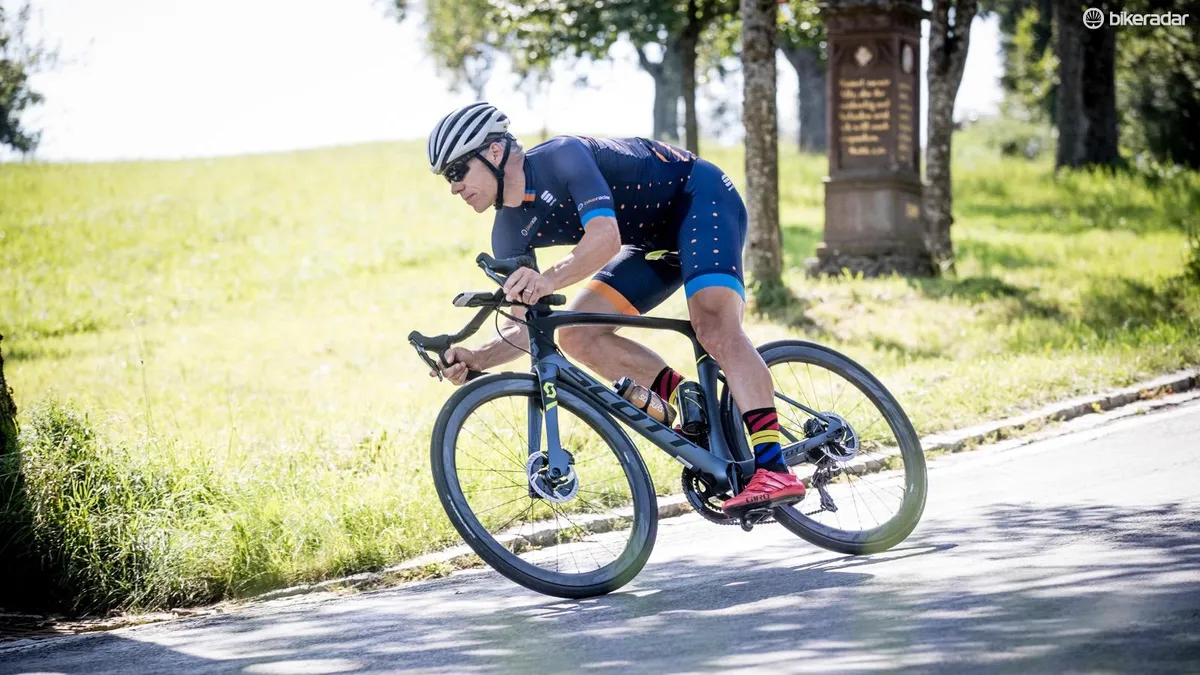
With a claimed frame weight of 985g, the Foil Premium Disc is lighter than the Aeroad Disc and Venge ViAS Disc. At a claimed 7.2kg / 15.9lb, the bike is light but not weight-weenie light. Disc bikes are typically about a pound heavier than comparable rim-brake models.
My take: darn close to a dream bike
For me, a fast bike largely comes down to a comfortable bike. If you can’t keep your torso low, the shape of the frameset or wheels or stem or whatever won’t really matter. I found the Scott Foil Premium Disc to be a very comfortable bike. Aside from that back end, even the aero bars are comfortable in the drops, on the hoods or when laying down with the forearms resting on the bars.
The Shimano Dura-Ace 9170 group with a 52/36t crank and 11-30t cassette is ideal for amateur racing and aggressive riding. The addition of sprint shifters is a great touch.
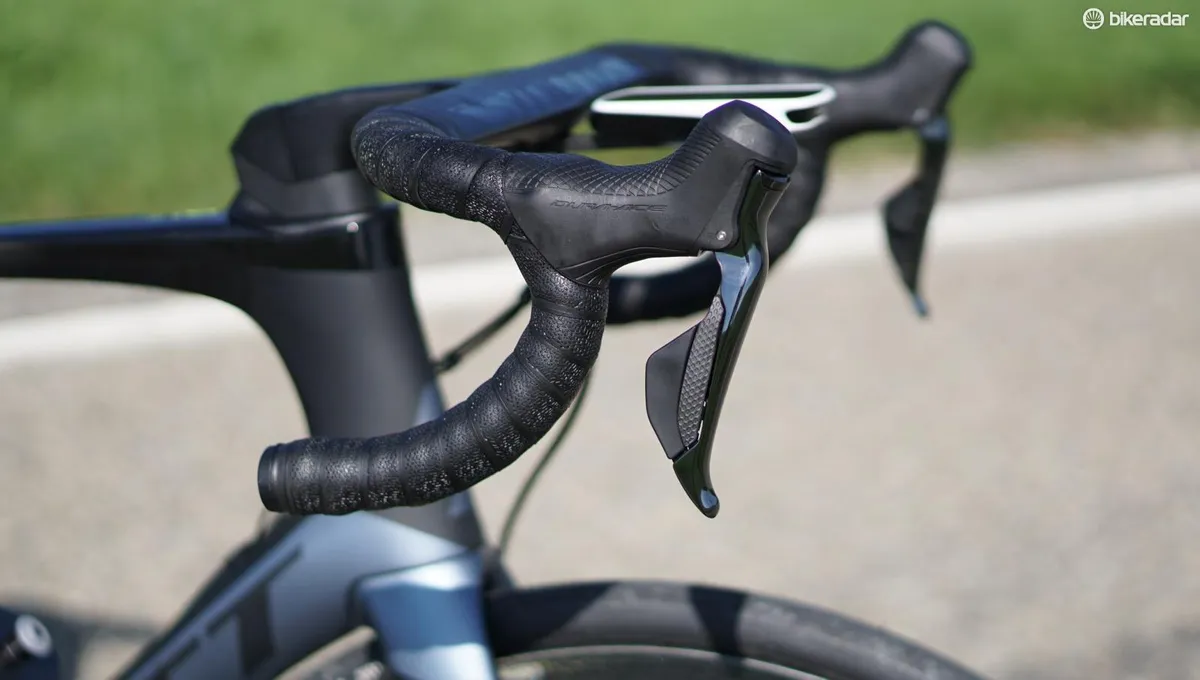
The 28mm-wide rubber is a bold choice, but the tires seem to dovetail well with the Zipp rims, which is a critical piece of the aero puzzle. I asked SRAM marketing’s technical rep Nate Newton about this. “The 303 NSW Discs (and the 202s) test fastest with 28s,” he said. “The 404 and 808 NSW Disc wheels are optimized around a 25mm tire.”
Further, rolling resistance tests on 28mm tires completed by BikeRadar and others have found them to be superior to comparable 25mm, although they obviously do weigh more. I would encourage you to ride a pair of high-quality 28s if your bike can fit them.
In all, if I could have this bike as is, but with a rounded trailing edge to the handlebar top, I could happily ride and race it just about anywhere.
As the name implies, this is indeed a premium build, and Scott offers other more affordable versions with a semi-integrated (read: normal) handlebar. I am eager to test ride those, too.
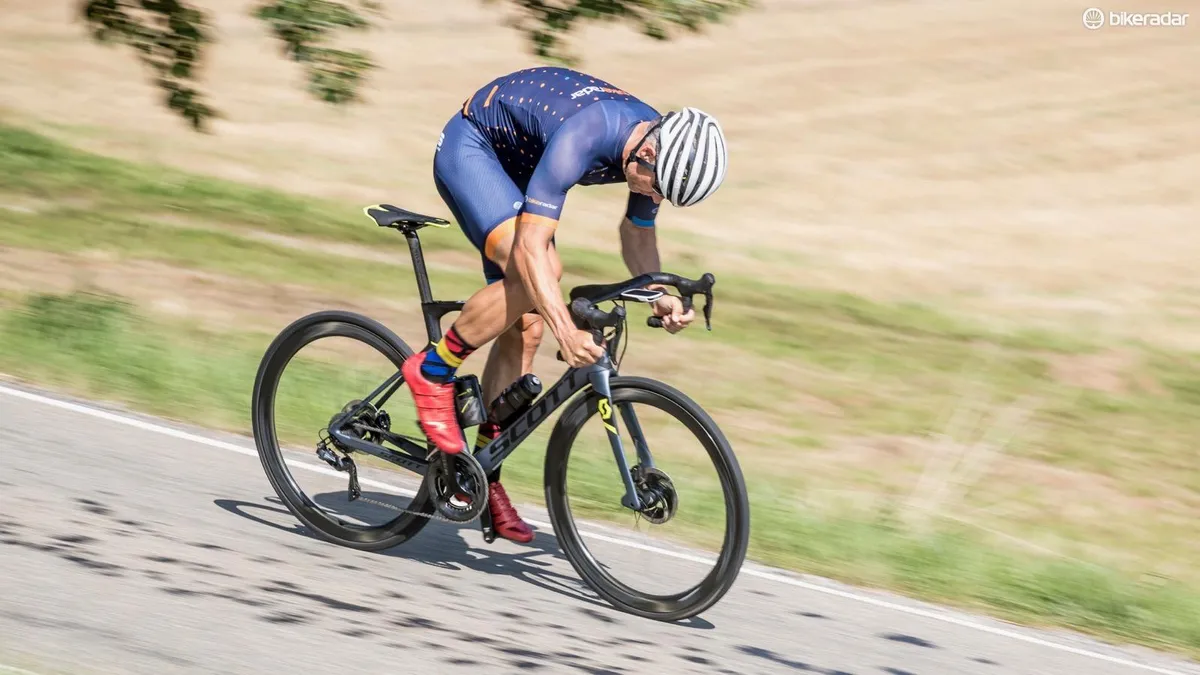
Click through the gallery above for a closer look at the Scott Foil Premium Disc.
